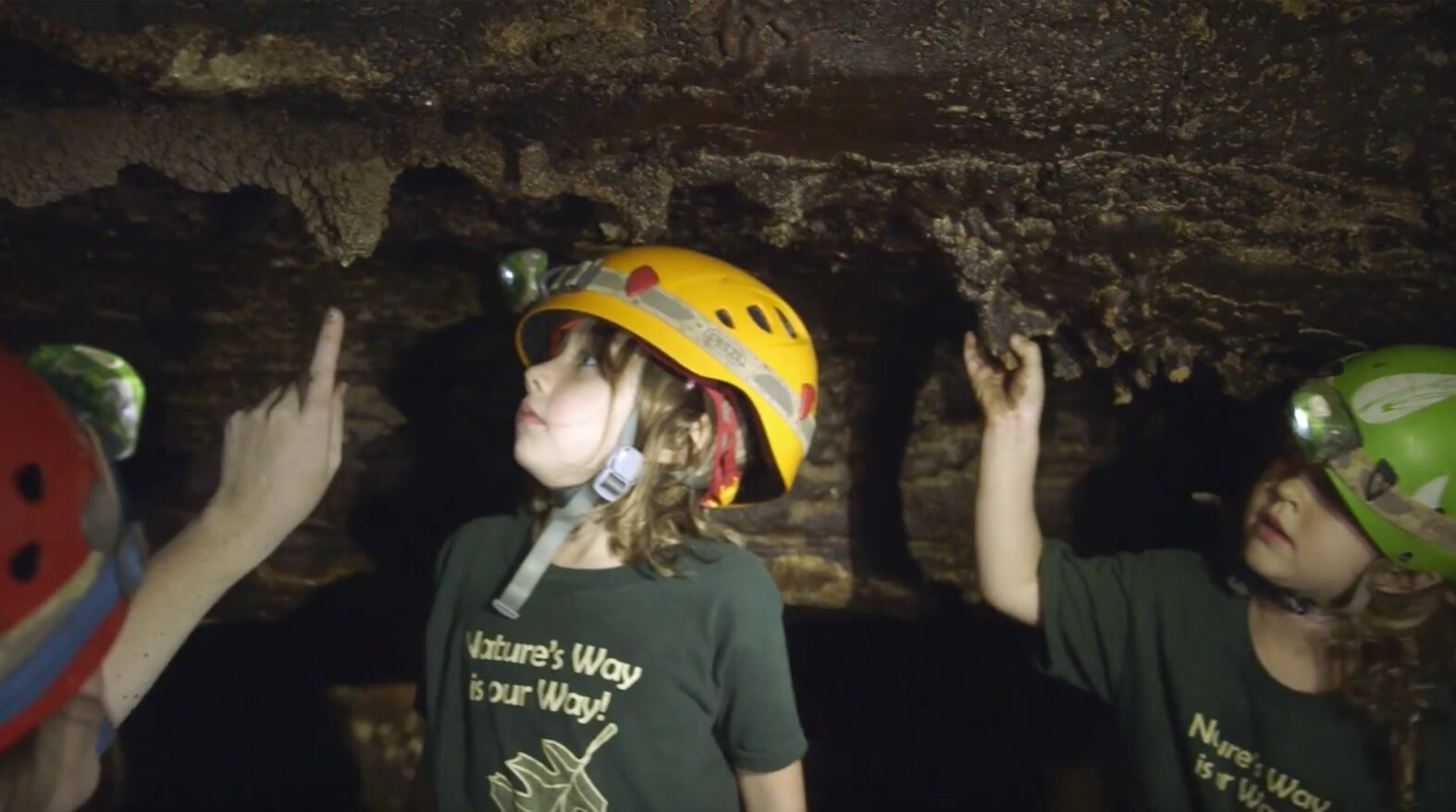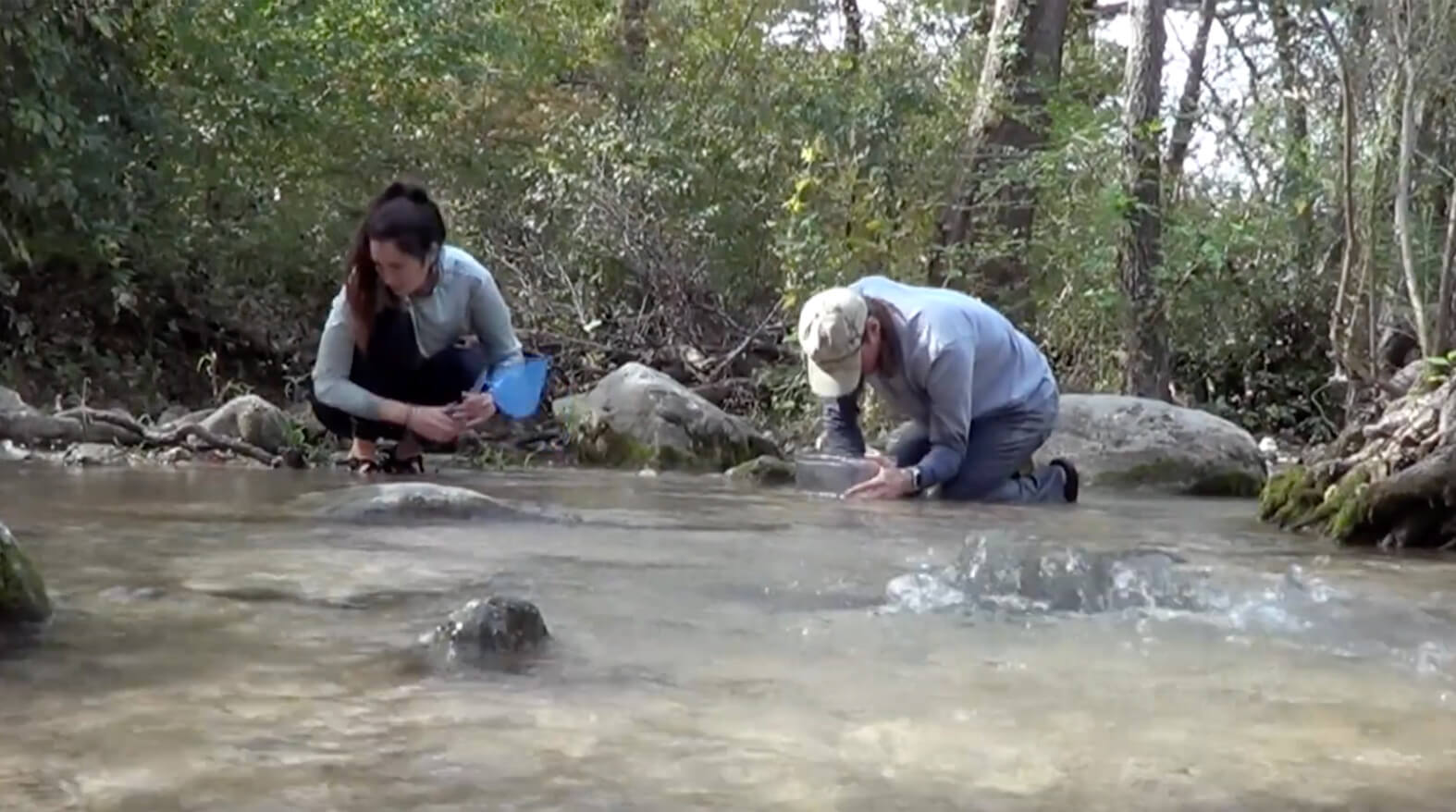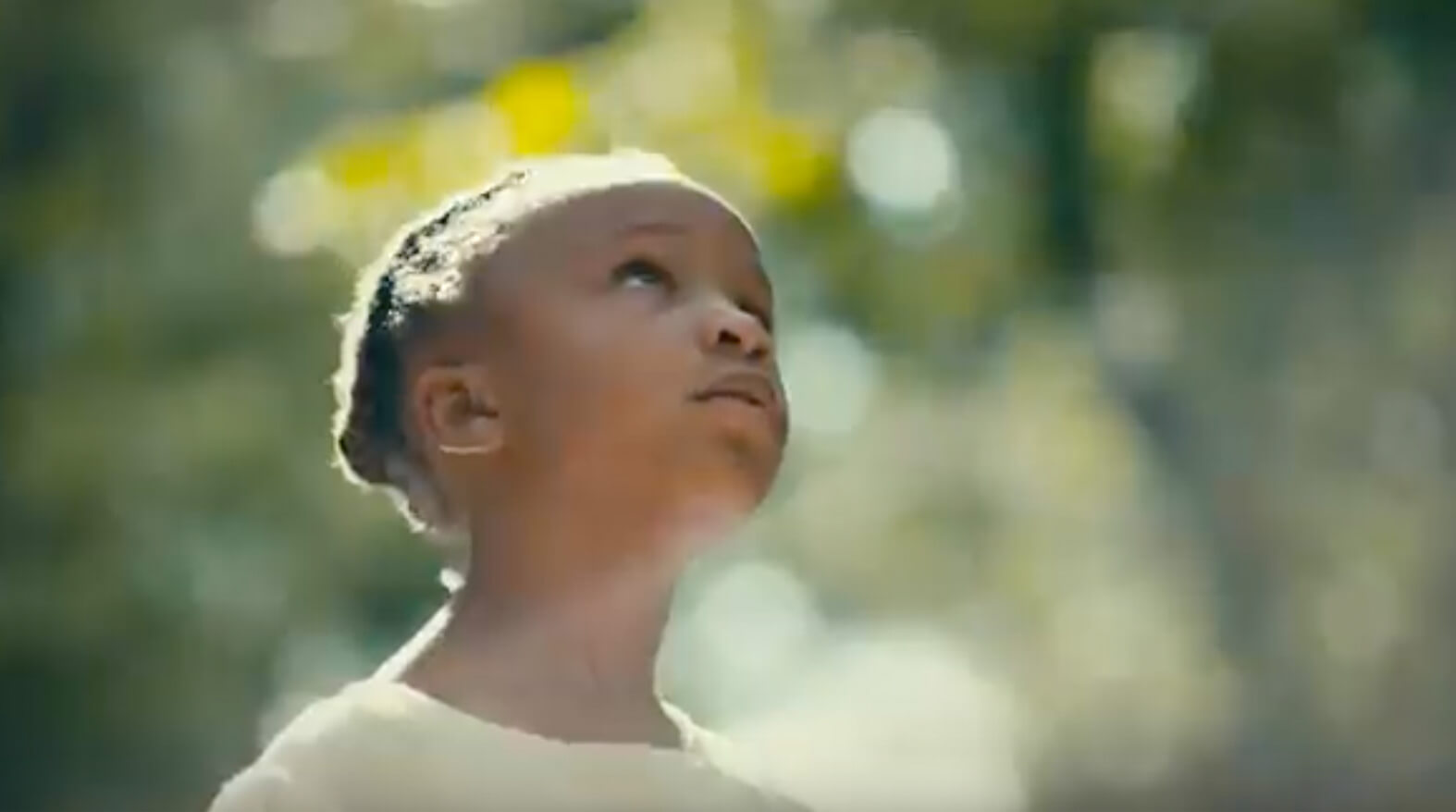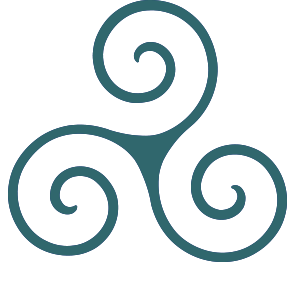Living Springs Lesson Plans
With Barton Springs as a jumping-off point, the Living Springs project provides Central Texas teachers specially designed lessons which offer a unique opportunity to enhance learning about environmental science and civil rights. Three TEKS-aligned lessons are geared toward 5th and 7th grade science, while highschoolers are offered a deep dive into the social history of Barton Springs using our short film A Reflecting Pool, focusing on the Jim Crow era. Scroll down to learn more about each lesson and request a free download.
5th and 7th grade lessons
The Wildlands
Austin’s water quality protection lands, known as The Wildlands, comprise thousands of acres that have been set aside through bonds approved by Austin voters to protect water quality at Barton Springs. In The Wildlands lesson, students will identify the cause and effect relationship between humans and the environment, engaging with the essential question: How does the “health” of the land impact Barton Springs?

Learn More
TEKS: Science 5.1E, 5.3A, 5.3B, 5.3C,5.3D, 7.5A, 7.5B, 7.5E, 7.11A (SBOE 2021)
Key Concepts
- “The Wildlands” immediately makes the connection between conservation land and Barton Springs.
- The introduction includes description of the recharge zone and a personal recollection of the impact of the changes in Austin and surrounding areas on Barton Springs.
- Reclamation and oversight of land management is explored in relation to two recharge zone lands, the Anne Ashmun Ranch and the Searcy Tract.
- A segment follows a group of students into a cave to give an “inside view” of the aquifer.
- An introduction into the biology/habitat of the Barton Springs Salamander is related to the importance of conservation land.
- This is a great time to talk about WED (weathering, erosion and deposition) as well as slow vs. rapid changes to the Earth’s surface.

Learn More
TEKS: Science 5.1(E), 5.3 (A, B, C), 5.9(A), 5.9(C), 5.10(A), 5.10(B), 7.1(E)(i), 7.10(A, B), 7.11(A, B, C)
Lesson Highlights:
- Barton Springs pool is part of a creek that has man made dams at each end, so it is part of the natural ecosystem
- There are species that only live in Barton Springs, including the Barton Springs Salamander and the Austin Blind Salamander
- The Barton Springs Salamander is endangered, and we are mandated to keep it safe in order to continue using the pool. In order to be able to swim in the pool, we must follow the Barton Springs habitat conservation plan.
- Scientists monitor the salamander population, as well as other species, for changes which indicate the health of Barton Springs and our water quality.
- Salamanders are difficult to study because of their size and the fact they spend part of their lives in the aquifer.
- Barton Springs Salamander has a limited range found at the 4 springs in Barton Springs in Zilker Park and other springs that are part of the Barton Springs segment of the Edwards Aquifer. To date, the Austin Blind salamander has only been observed at the 4 springs in Barton Springs.
- There is a breeding program where salamanders live in captivity in order to help save them from extinction in the event that the aquifer is polluted.
- Scientists follow and study the salamanders based on their unique markings.
- Scientists study salamander structures and how they are able to regenerate.
Surveying Salamanders
Surveying Salamanders follows the work of three City of Austin biologists who chart the population and health of the endangered salamanders that call Barton Springs home. In this lesson students learn about the salamanders and the unique ecosystem that they inhabit. Students will understand the impact that they can have on preserving salamander habitat. They will answer the essential question: How does the Barton Springs Salamander interact with its living (biotic) and nonliving (abiotic) environment.
Cleaning Day
This video offers a behind-the-scenes look at the process of caring for Barton Springs. Students will observe paid and volunteer efforts that contribute to the maintenance of the Springs. They will observe how federal protections for the Barton Springs salamander impact these practices. Students engage with the essential question: How does the impact of swimmers and human actions upstream make it “necessary” to have a cleaning day?

Learn More
TEKS: Science 5.1E, 5.3A, 5.3B, 5.3C,5.3D, 7.1A, 7.3D, 7.4, 7.5A, 7.5B, 7.5E, 7.5F, 7.5G, 7.11A (SBOE 2021)
Lesson Highlights
- Opening shows swimmers brief, unedited, frustration with the weekly cleaning.
- Highlights the Friends of Barton Springs organization and the commitment to keep Barton Springs accessible.
- Connections to flooding and the human impact on the springs.
- Reflections of the volunteers highlight the need for stewardship of Barton Springs.
high school lesson

Learn More
Education Standards- TEKS
Sociology Topic– Racial and Ethnic Relations- Race, Ethnicity and Social Structure, Patterns of Intergroup Relations, Minority Groups in the United States
- 113.46. Sociology
- Sociology, an elective course, is an introductory study in social behavior and organization of human society. This course will describe the development of the field as a social science by identifying methods and strategies of research leading to an understanding of how the individual relates to society and the ever changing world. Students will also learn the importance and role of culture, social structure, socialization, and social change in today’s society.
(6) Students identify and discuss how the actions of U.S. citizens and the local, state, and federal governments have either met or failed to meet the ideals espoused in the founding documents.
(11) Social inequality. The student understands the impact of race and ethnicity on society. The student is expected to:
(A) define race and ethnicity and differentiate among the distinguishing characteristics of minority groups;
(B) contrast the terms discrimination, prejudice, and bias;
(C) discuss the ramifications of stereotyping;
(D) analyze the varying treatment patterns of minority groups such as African American, Asian American, Hispanic American, and American Indian; and
(E) explain instances of institutional racism in American society.
(19) Social studies skills. The student applies critical-thinking skills to organize and use information acquired from a variety of valid sources, including electronic technology.
The student is expected to:
(A) create a product on a contemporary sociological issue or topic using critical methods of inquiry;
High School §113.C. August 2022 Update Page 42 of 69 (B) analyze information by sequencing, categorizing, identifying cause-and-effect relationships, comparing, contrasting, finding the main idea, summarizing, making generalizations and predictions, and drawing inferences and conclusions;
(20) Social studies skills.
The student communicates in written, oral, and visual forms. The student is expected to:
(A) use sociology-related terminology correctly;
(B) use standard grammar, spelling, sentence structure, and punctuation;
(C) transfer information from one medium to another, including written to visual and written or visual to statistical, using computer software as appropriate; and
(D) create written, oral, and visual presentations of social studies information.
UNITED STATES HISTORY
- 113.41. United States History Studies Since 1877
(b) Introduction.
(1) In United States History Studies Since 1877, which is the second part of a two-year study that begins in Grade 8, students study the history of the United States from 1877 to the present. The course content is based on the founding documents of the U.S. government, which provide a framework for its heritage. Historical content focuses on the political, economic, and social events and issues related to industrialization and urbanization, major wars, domestic and foreign policies, and reform movements, including civil rights. Students examine the impact of geographic factors on major events and eras and analyze their causes and effects. Students examine the impact of constitutional issues on American society, evaluate the dynamic relationship of the three branches of the federal government, and analyze efforts to expand the democratic process. Students describe the relationship between the arts and popular culture and the times during which they were created. Students analyze the impact of technological innovations on American life. Students use critical-thinking skills and a variety of primary and secondary source material to explain and apply different methods that historians use to understand and interpret the past, including multiple points of view and historical context.
(2) To support the teaching of the essential knowledge and skills, the use of a variety of rich primary and secondary source material such as biographies, autobiographies, landmark cases of the U.S. Supreme Court, novels, speeches, letters, diaries, poetry, songs, and artworks is encouraged. Motivating resources are available from museums, historical sites, presidential libraries, and local and state preservation societies.
(8) Students discuss how and whether the actions of U.S. citizens and the local, state, and federal governments have achieved the ideals espoused in the founding documents.
(c) Knowledge and skills.
(1) History. The student understands the principles included in the Celebrate Freedom Week program. The student is expected to:
(A) analyze and evaluate the text, intent, meaning, and importance of the Declaration of Independence and the U.S. Constitution, including the Bill of Rights; (B) analyze and evaluate the application of these founding principles to historical events in U.S. history; and
(3) History. The student understands the political, economic, and social changes in the United States from 1877 to 1898. The student is expected to:
(C) analyze social issues affecting women, minorities, children, immigrants, and urbanization.
(6) History. The student understands significant events, social issues, and individuals of the 1920s. The student is expected to:
(A) analyze causes and effects of events and social issues such as immigration, Social Darwinism, the Scopes Trial, eugenics, race relations, nativism, the Red Scare, Prohibition, and the changing role of women; and
(9) History. The student understands the impact of the American civil rights movement. The student is expected to:
(A) trace the historical development of the civil rights movement from the late 1800s through the 21st century, including the 13th, 14th, 15th, and 19th amendments;
(B) explain how Jim Crow laws and the Ku Klux Klan created obstacles to civil rights for minorities such as the suppression of voting;
(C) describe the roles of political organizations that promoted African American, Chicano, American Indian, and women’s civil rights;
(D) identify the roles of significant leaders who supported various rights movements, including Martin Luther King Jr., Cesar Chavez, Dolores Huerta, Rosa Parks, and Betty Friedan;
(G) describe presidential actions and congressional votes to address minority rights in the United States, including desegregation of the armed forces, the Civil Rights Act of 1964, and the Voting Rights Act of 1965;
(I) evaluate changes in the United States that have resulted from the civil rights movement, including increased participation of minorities in the political process; and
(J) describe how Sweatt v. Painter and Brown v. Board of Education played a role in protecting the rights of the minority during the civil rights movement.
(20) Government. The student understands the impact of constitutional issues on American shape American culture;
(28) Social studies skills. The student understands how historians use historiography to interpret the past and applies critical-thinking skills to organize and use information acquired from a variety of valid sources, including technology. The student is expected to:
(A) analyze primary and secondary sources such as maps, graphs, speeches, political cartoons, and artifacts to acquire information to answer historical questions;
(B) analyze information by applying absolute and relative chronology through sequencing, categorizing, identifying cause-and-effect relationships, comparing and contrasting, finding the main idea, summarizing, making generalizations, making predictions, drawing inferences, and drawing conclusions.
UNITED STATES GOVERNMENT
- 113.44. United States Government
(b) Introduction.
(1) In United States Government, the focus is on the principles and beliefs upon which the United States was founded and on the structure, functions, and powers of government at the national, state, and local levels. This course is the culmination of the civic and governmental content and concepts studied from Kindergarten through required secondary courses. Students learn major political ideas and forms of government in history. A significant focus of the course is on the U.S. Constitution, its underlying principles and ideas, and the form of government it created. Students analyze major concepts of republicanism, federalism, checks and balances, separation of powers, popular sovereignty, and individual rights and compare the U.S. system of government with other political systems. Students identify the role of government in the U.S. free enterprise system and examine the strategic importance of places to the United States. Students analyze the impact of individuals, political parties, interest groups, and the media on the American political system, evaluate the importance of voluntary individual participation in a constitutional republic, and analyze the rights guaranteed by the U.S. Constitution. Students examine the relationship between governmental policies and the culture of the United States. Students identify examples of government policies that encourage scientific research and use critical-thinking skills to create a product on a contemporary government issue
(2) To support the teaching of the essential knowledge and skills, the use of a variety of rich primary and secondary source material such as the complete text of the U.S. Constitution, selected Federalist Papers, landmark cases of the U.S. Supreme Court (such as those studied in Grade 8 and U.S. History Since 1877), biographies, autobiographies, memoirs, speeches, letters, and periodicals that feature analyses of political issues and events is encouraged.
(8) Students discuss how and whether the actions of U.S. citizens and the local, state, and federal governments have achieved the ideals espoused in the founding documents.
(2) History. The student understands the roles played by individuals, political parties, interest groups, and the media in the U.S. political system, past and present. The student is expected to:
(A) describe the processes used by individuals, political parties, interest groups, or the media to affect public policy; and
(B) analyze the impact of political changes brought about by individuals, political parties, interest groups, or the media, past and present.
(6) Government. The student understands the American beliefs and principles reflected in the U.S. Constitution and why these are significant. The student is expected to:
(D) evaluate constitutional provisions for limiting the role of government, including republicanism, checks and balances, federalism, separation of powers, popular sovereignty, and individual rights;
(F) identify how the Declaration of Independence and the U.S. Constitution continue to shape American beliefs and principles in the United States today
(7) Government. The student understands the structure and functions of the government created by the U.S. Constitution. The student is expected to:
(D) identify the purpose of selected independent executive agencies, including the National Aeronautics and Space Administration (NASA), and regulatory commissions, including the Environmental Protection Agency (EPA), Occupational Safety and Health Administration (OSHA), Food and Drug Administration (FDA), and Federal Communications Commission (FCC);
(F) analyze selected issues raised by judicial activism and judicial restraint;
(12) Citizenship. The student understands the rights that are protected and secured by the U.S. Constitution and Bill of Rights. The student is expected to:
(G) recall the conditions that produced the 14th Amendment and describe subsequent efforts to selectively extend some of the Bill of Rights to the states through U.S. Supreme Court rulings and analyze the impact on the scope of fundamental rights and federalism.
(14) Citizenship. The student understands the importance of voluntary individual participation in the U.S. constitutional republic. The student is expected to:
(A) analyze the effectiveness of various methods of participation in the political process at local, state, and national levels;
(B) analyze historical and contemporary examples of citizen movements to bring about political change or to maintain continuity; and
(C) describe the factors that influence an individual’s political attitudes and actions
(16) Culture. The student understands the relationship between government policies and the culture of the United States. The student is expected to:
(A) evaluate a U.S. government policy or court decision that has affected a particular racial, ethnic, or religious group such as the Civil Rights Act of 1964 and the U.S. Supreme Court cases of Hernandez v. Texas and Grutter v. Bollinger; and
(B) explain changes in American culture brought about by government policies such as voting rights, the Servicemen’s Readjustment Act of 1944 (GI Bill of Rights), the Immigration and Nationality Act of 1965, the Immigration Reform and Control Act of 1986, affirmative action, and racial integration
(19) Social studies skills. The student applies critical-thinking skills to organize and use information acquired through established research methodologies from a variety of valid sources, including technology. The student is expected to:
(A) analyze information by sequencing, categorizing, identifying cause-and-effect relationships, comparing, contrasting, finding the main idea, summarizing, making generalizations and predictions, and drawing inferences and conclusions;
(20) Social studies skills. The student communicates in written, oral, and visual forms. society. The student is expected to:
(A) analyze the effects of landmark U.S. Supreme Court decisions, including Plessy v. Ferguson, Brown v. Board of Education, Hernandez v. Texas, Tinker v. Des Moines, and Wisconsin v. Yoder; and
(B) explain why landmark constitutional amendments have been proposed and ratified from 1877 to the present.
(22) Citizenship. The student understands the promises of the Declaration of Independence and the protections of the U.S. Constitution and the Bill of Rights. The student is expected to:
(A) identify and analyze methods of expanding the right to participate in the democratic process, including lobbying, non-violent protesting, litigation, and amendments to the U.S. Constitution;
(B) evaluate various means of achieving equality of political rights, including the 19th, 24th, and 26th amendments and congressional acts such as the American Indian Citizenship Act of 1924;
(C) explain how participation in the democratic process reflects our national identity, patriotism, and civic responsibility; and
(25) Culture. The student understands how people from various groups contribute to our national identity. The student is expected to:
(A) explain actions taken by people to expand economic opportunities and political rights for racial, ethnic, gender, and religious groups in American society;
(C) explain how the contributions of people of various racial, ethnic, gender, and religious groups
A Reflecting Pool
High School Civil Rights Lesson Plan
The history of Barton Springs reflects the broader history of Austin’s civil rights struggle. In the 1920s Jim Crow practices kept Austin’s Black community from accessing Barton Springs. This de facto segregation did not end until 1962. Our lesson uses the Reflecting Pool video as a jumping off point to a wider exploration of the impacts of segregation in Austin. This lesson is geared specifically for high school level sociology courses, but could also be useful in history and government courses.
